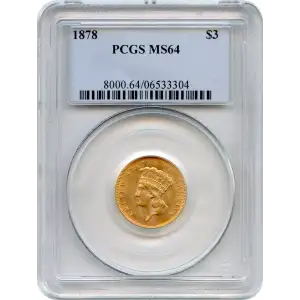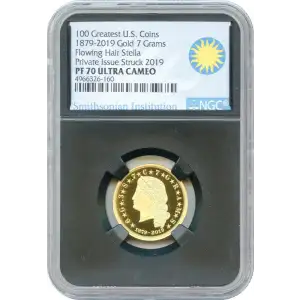- 630-280-7300
- Free shipping over $4,500
Three Dollar Gold Pieces, 1854-1889 |
Designed by James B. Longacre, Three-Dollar Gold Pieces were authorized on February 21, 1853, virtually escaping notice when included in a subsidiary silver coinage bill presented to Congress. This coin served little useful purpose, except for redemption at the post office for 100 stamps, and was a generally unpopular coin. Even so, the Three-Dollar Gold Piece was minted for 35 years, usually in limited numbers. The Three-Dollar gold series is one of the most popular of all gold series to acquire by advanced collectors and investors. This is due in part to the fact that of the 81 issues minted in both Proof and Business strikes, only one coin's mintage exceeds 100,000 pieces. In fact, 73 coins, or 90%, have an original mintage of less than 10,000 pieces! This relative rarity does not indicate, however, that most of these coins cannot be acquired. To the contrary, most coins are at least available in About Uncirculated condition, with many available in Uncirculated and unimpaired Proof condition.
Four Dollar Gold Pieces, 1879-1880
The Four-Dollar Gold Piece, or "Stella," is often seen as part of the regular U.S. Gold series, despite technically being a pattern coin. It was proposed by John A. Lasser, then Minister to Austria, to match European gold coins like the German 20-Mark, British Sovereign, and French and Swiss 20-Franc pieces, but this metric equivalence never took hold in the U.S. The Stellas came in two designs: Charles Barber’s "Flowing Hair" Liberty and George Morgan’s "Coiled Hair" Liberty. The most commonly encountered 1879 Flowing Hair Stella was actually produced as a "restrike" in January (25), April (100), and May (300) of 1880. The "original" 1879 Flowing Hair Stella (without central striations) is extremely rare, with fewer than 12 known to exist. Fewer than 40 examples exist across the other three varieties—1879 and 1880 Coiled Hair and 1880 Flowing Hair—each fetching mid to high six to seven-figure prices!


